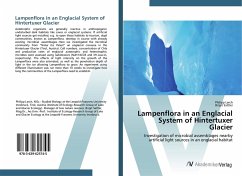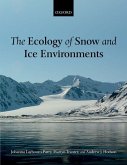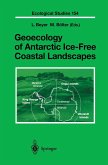Autotrophic organisms are generally inactive in anthropogenic undisturbed dark habitats like caves or englacial systems. If artificial light sources get installed, e.g. to open those habitats to tourism, algal communities, known as Lampenflora, develop in course with already existing microbial assemblages. Here we investigated the microbial community from "Natur Eis Palast" an englacial crevasse in the Hintertuxer Glacier (Tirol, Austria). Cell numbers, concentration of Chla and production rates of englacial autotrophic and heterotrophic microbes were assessed using radiotracers (NaH14CO3 and 3H-Leucin, respectively). The effects of light intensity on the growth of the Lampenflora were also estimated, as well as the penetration depth of light in the ice allowing Lampenflora to grow. An experiment using different illumination was run more than 10 weeks to investigate how long the communities of the Lampenflora need to establish.








